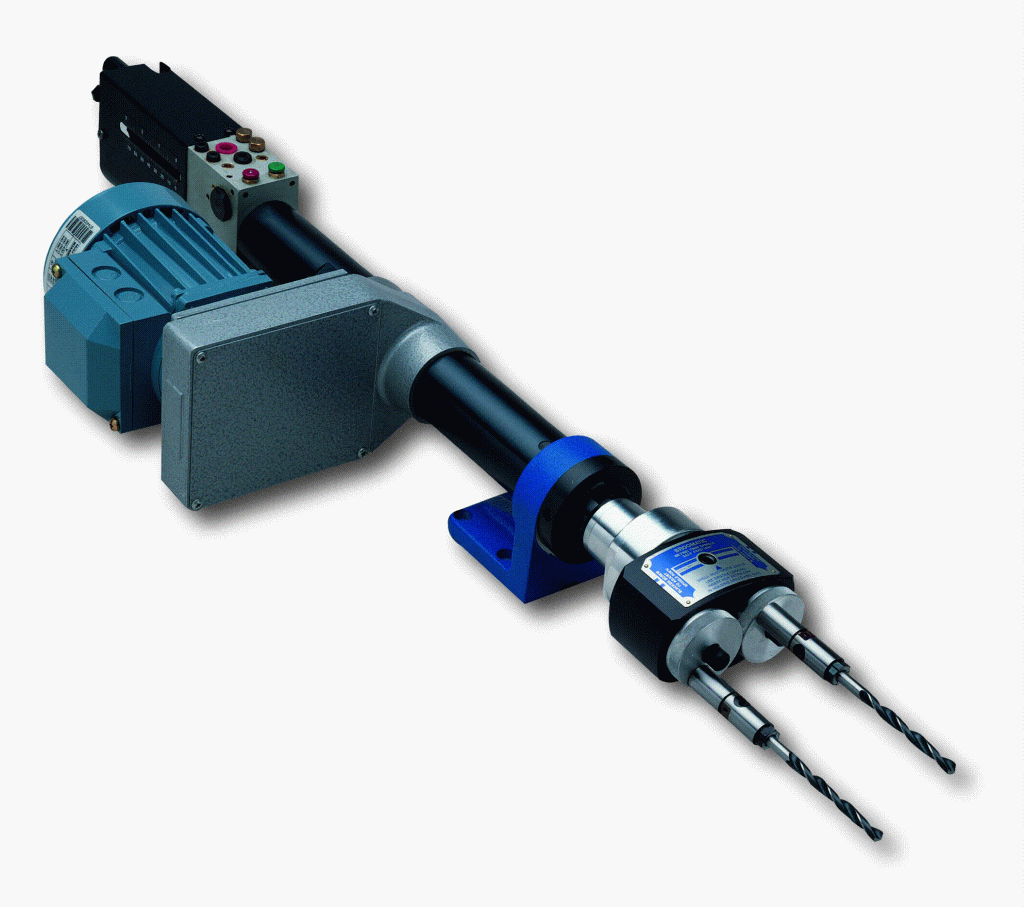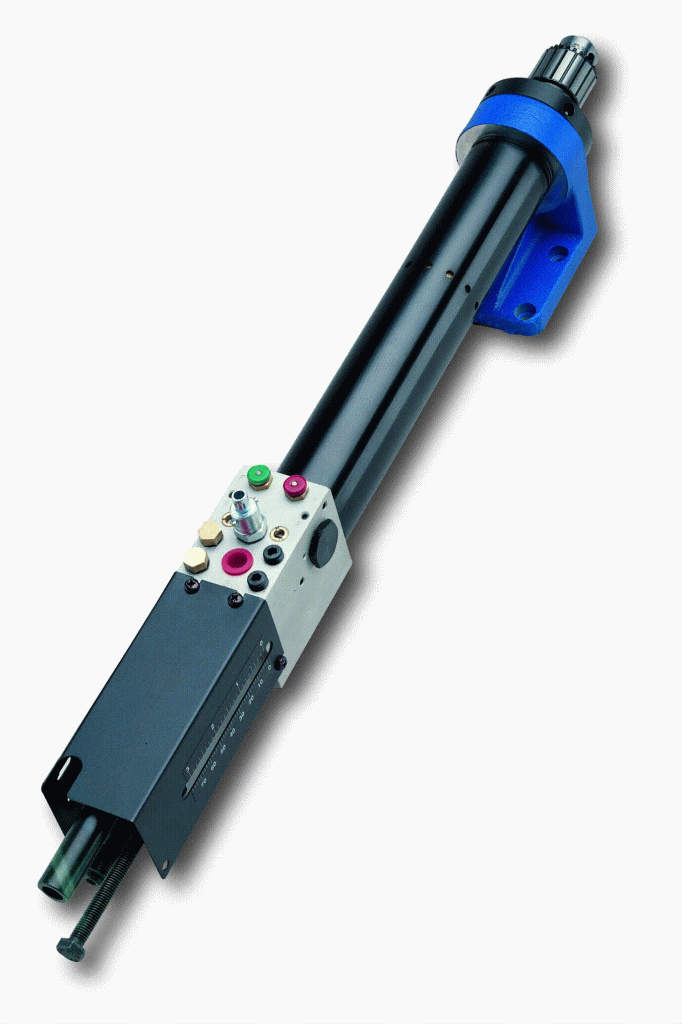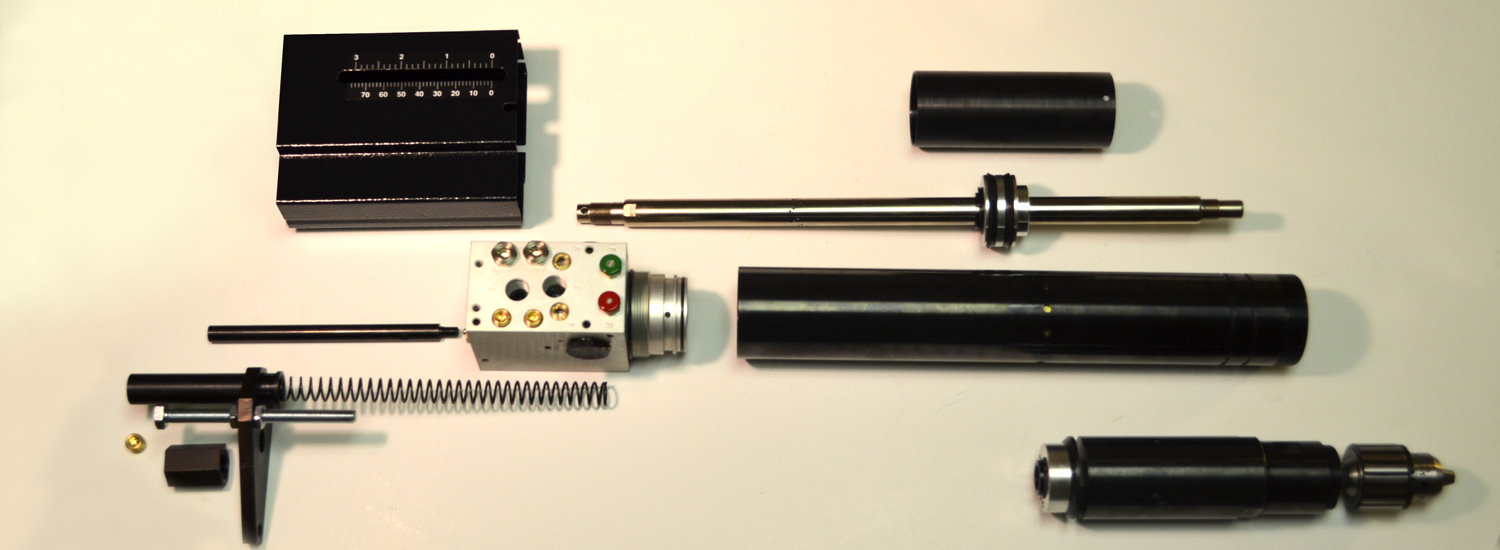Self-Feed Units: The Selection Process
TOOL FEATURES / ENGINEERING MANUAL a) Pneumatic or electric
b) Correct rpm
| Metric | R = | 318.5 x Surface Meters per Minute Drill dia. (mm) |
| US Standard | R = | 3.82 x Surface Feet per Minute Drill dia. (inches) |

| a) Chuck | Base drill comes standard with 3/8" (10 mm) keyed drill chuck. Optional 1/4” (6.5mm) and 1/2” (13mm) keyed drill chucks. |
| b) Collet Holder & Collet | Optional alternative to the keyed drill chucks. Uses Type 950 collets, 3/8” maximum drill size. |
| c) Multiple Spindle Heads | Multiple Spindle Heads are available with fixed or adjustable centers. The Heads mount directly onto the Self-Feed Units. Multiple Spindle Head collets need to be ordered separately. |
| d) Offset Head | For drilling applications requiring special clearances. |
| e) Spindle Positioners | To facilitate rapid changeover of spindle positioning where alternative settings are required on Multi-Spindle heads. |
| a) Nose Angle Bracket |
| b) Nose Flange |
| c) Column and Clamp Options |
| a) Return Limit Kit | Sends out a positive signal when the tool returns to the home position. Pneumatic or Electric options. |
| b) Dwell Control | Used to dwell for a set period of time in the extended position before returning back to the home position. |
| c) Hydraulic Feed Control | Sets a constant feed rate through the material. |
| d) Peck Feed Kit | Allows pecking of unit for drilling deep holes. |
| e) Swarf Exclusion Kit | Protects drill unit from swarf (chips, dirt, fluid, etc.). |
| f) Exhaust Collector | Reduces noise and protects drill unit from swarf. Allows muffling or piping of exhausted air away from the work area. |
| g) Bottom Limit Kit | Sends a signal when drill unit is fully extended. |
| h) PLC Interface Module | Permits PLC to communicate with Self Feed Units. |
| i) Skip Check Unit | Enables drill units to skip through tubular sections. |
Why Use Air Tools?
| Air tools offer a much better power to weight ratio compared with electric tools. | |
| Safer than electric. | |
| Air tools do not require the cool off period that some electric tools require. | |
| Simpler design and construction. | |
| More robust. | |
| Reliability. | |
| Not damaged by stalling. |
Who Uses Air Tools?
| 1. Aerospace Industry | Drills, Tappers, Screwdrivers, Abrasive Tools, Riveters, Nutsert Tools. |
| 2. Vehicle Assembly | Drills, Screwdrivers, Impact Wrenches, Abrasive Tools, Nutrunners, Nutsert Tools. |
| 3. Automotive | Impact Wrenches, Polishers, Chipping Hammers. |
| 4. Construction Industry | Impact Wrenches, Chippers, Grinders, Scabblers. Needle Scalers, Core Drills. |
| 5. White Goods | Screwdrivers, Drills, Tappers, Nutrunners, Riveters, Nutsert Tools. |
How Does an Air Motor Work?
An air motor works by creating a flow of air over a rotor in a cylinder. This flow of air causes the rotor to turn and produce a torque proportional to the pressure of the air supply.
How Does a Percussive Tool Work?
A percussive tool works by applying air to either side of a piston in a cylinder in turn to propel the piston forwards and then backwards to produce a force on the object the piston comes into contact with.

